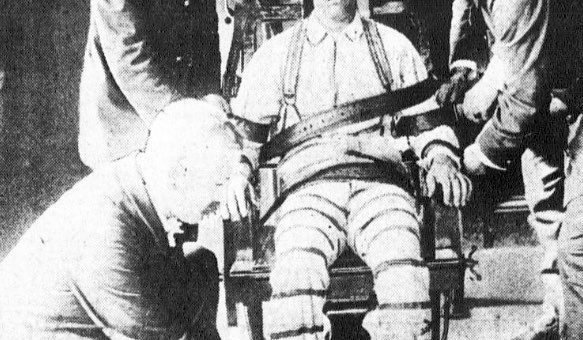
As electric chairs were first being installed in the United States, beginning in New York, people were assured that this was the pleasant way to get rid of accused murderers. The truth was far more brutal than a mere flick of the switch (or several flicks, as was often the case).
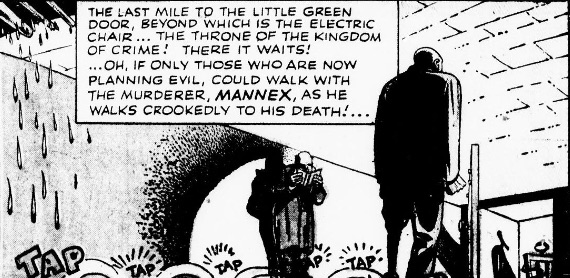
1. The Last Visit
In 1912, a inmate housed on death row, called the death house, was asked about the final moments before an inmate was taken to the electric chair.
After talking about what the night before the execution was like, he went on to say:
“But perhaps the agony of that night before a fellow went away was not to bad as the day of the last parting of the man from his relatives.
“The guards were kind. When the relatives were brought in, they used to screen the man’s cell with curtains.
“But the curtains did not shut out the cries and screams of agony. And we who heard them understood.
“Fathers, mothers, sisters, brothers, sweethearts! They went by us to the curtained cell, weeping. They were carried out fainting. They were dragged out raving.
“We used to feel for these scenes coming on, and an awful silence would fill the death house just before them and long after them.
“We were supposed to be hardened criminals. But not one of us ever wanted to be the first to break the silence after one of those partings.” [1]
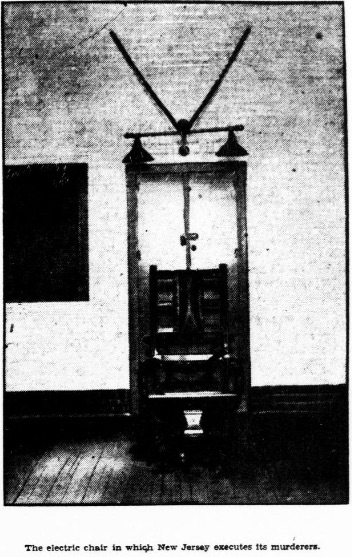
2. Virginia’s First Woman in the Electric Chair
Virginia Christian, aged 21, was the first woman to be executed by electric chair in the state of Virginia in 1912. Before her execution, she admitted to murder and robbery.
According to one newspaper account, Ms. Christian worked as a washerwoman for an elderly woman. One day, the elderly woman stated that she was unhappy with Ms. Christian’s work. In response to the criticism, Ms. Christian attacked the old woman with a fire poker and beat her to death. She then tore off the old woman’s hair and stuffed it down her throat.
In court, Ms. Christian claimed that she acted in self defense, but that hardly explains the reason for the stuffing of the victim’s hair.
It is said that she went to the electric chair calmly. [2]

3. Strapped into the Chair
When Rev. Clarence V. T. Richeson was taken to the electric chair in 1912 for the murder of choir girl Avis Linnell, newspaper reported the scene in great detail:
“Richeson was sitting in the electric chair. The straps and metals that would send a current of 1,900 volts through his body were being adjusted by prison guards… The rubber mask was put on. The guard fumbled it; put it upside down; then changed it… His arms were strapped to the chair. The small leather cap was set on his head… The water from the sponge in the leather head piece dripped down Richeson’s face and onto his shoulder… The electric wires were inserted in the leg and head electrodes… The guards who had been adjusting the straps drew back.
“The executioner stepped to his key… Warden Bridges raised his hand. The executioner twisted the switch.
“Richeson’s body stiffened. The left hand, tightly strapped above the wrist, twisted and writhed. The head jutted forward suddenly, jerkily.
“From under the edge of the little leather cap a wisp of white smoke puffed out.” [3]
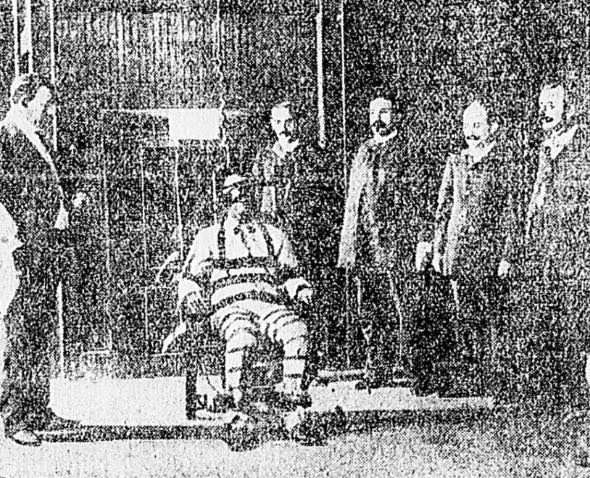
4. Death Watch
In 1910, the death watch before electrocution was described:
“At Charlestown, Mass., just across the river from Boston, the condemned man dons a suit of black the day on which the death watch is placed upon him. This habit is cut after the fashion of a sailor suit and is worn by the convicted person two or three days before the penalty is paid.
“The prisoner is never told by the warden of the prison just when the execution will take place. He is taken by surprise at midnight when his cell is opened by deputies and these three words fall upon his ear:
“’We are ready.’
“Between two men, with a priest bringing up the rear, the march to the chair begins. Down the long corridor, their heels striking hard upon the cement floors, the little party of men wend their way. Suddenly they pass through a door and all stand in a small room with the electric chair in front of them.” [4]
5. Wife’s Picture Pinned to His Chest
On the day of his execution in 1915, Charles A. Becker, a former police lieutenant and convicted of instigating the murder of a gambler, declared his innocence and forgave all who had brought him to the chair.
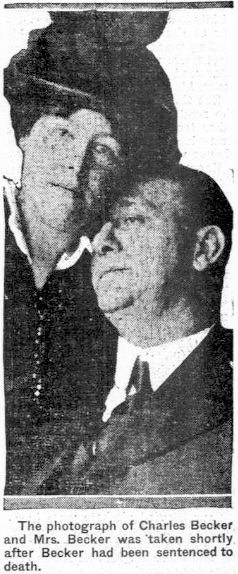
Mrs. Becker, Charles’ wife, suffered most from the decision to impose capital punishment upon her husband. She argued his case, maintained that he was innocent, and kept by his side until the end.
When all failed, Mrs. Becker was allowed to visit Charles during the death watch. He said to her, “You have been a brave little woman. Be brave now.”
As he went to the electric chair, Charles Becker wore a picture of his wife, pinned above his heart. [5]

6. Not So Painless
At first, the electric chair was said to be a painless and efficient way to kill someone, but by 1916 there was evidence to the contrary:
“It was assumed that the shock of the powerful current would instantly render the condemned man unconscious. But the unpleasant feature of most electrocutions has been the necessity of repeating the shock several times. This was not foreseen.
“Experience in the death chamber has shown that the electric current does not usually destroy life at the first shock. Evidences of pulsating life compel the executioner to turn on the current again and yet again. This distressing failure of the electric charge to instantly end life has caused much speculation among scientists and humanitarians.” [6]

